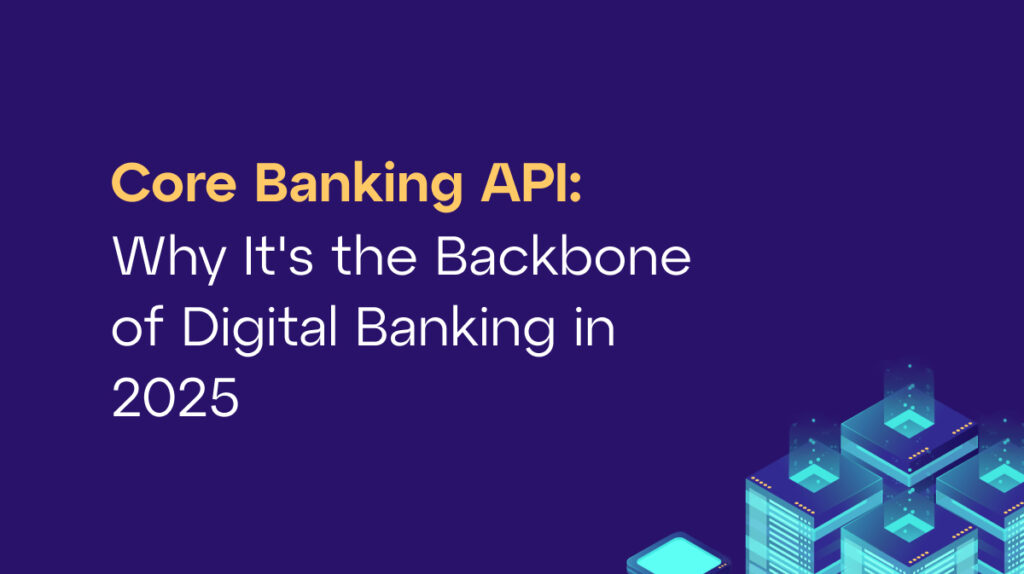
Digital banking in 2025 is no longer just about having an app or moving to the cloud. It’s about building banking experiences that are fast, flexible, secure, and deeply connected. At the heart of this transformation is the Core Banking API; the connective tissue that powers digital-first banking.
For banks, fintechs, and microfinance institutions across Africa and other emerging markets, API-first core banking platforms like SeaBaas are redefining what’s possible. They allow financial institutions to innovate faster, integrate smarter, and scale without being held back by rigid legacy systems.
In this article, we explore why the core banking API has become the backbone of digital banking in 2025, the trends shaping its adoption, and what financial institutions need to know to stay competitive.
What Is a Core Banking API?
A core banking API is an application programming interface that connects a bank’s core systems with third-party applications, fintech solutions, and customer-facing channels. It enables seamless data exchange and real-time functionality, powering everything from mobile transactions to compliance reporting.
Instead of siloed systems, an API-first approach creates an ecosystem where:
- Payments, lending, deposits, and compliance modules talk to each other.
- Banks integrate quickly with fintech partners.
- Customers experience real-time banking across digital touchpoints.
Why APIs Are the Backbone of Digital Banking in 2025
1. Speed to Market with Digital Products
In today’s competitive environment, banks can’t spend years deploying new services. APIs cut time-to-market dramatically, allowing institutions to launch digital wallets, savings products, or lending services in weeks instead of months. This agility is especially critical in Nigeria, Ghana, and Kenya, where fintechs are rapidly reshaping customer expectations.
2. Seamless Integration with Fintech Ecosystems
From payments to regtech to credit scoring, fintech innovation is booming. A core banking API makes it simple for institutions to plug into these ecosystems, rather than reinvent the wheel. This not only improves customer experiences but also reduces costs by leveraging best-in-class third-party solutions.
3. Enhanced Compliance and Reporting
Regulatory pressure is intensifying across Africa and the GCC. APIs make compliance smarter by automating reporting, enabling real-time audit trails, and reducing manual errors. For CROs and compliance teams, this means less firefighting and more proactive risk management.
4. Financial Inclusion Through Connectivity
Microfinance institutions and digital-only banks thrive when they can reach underserved populations. APIs make this possible by connecting mobile money, agent networks, and core banking platforms in real time. With SeaBaas, for example, banks can extend financial services to millions of SMEs and unbanked populations without overhauling their systems.
5. Future-Proofing Against Legacy Costs
Legacy systems don’t just slow down banks. They drain resources. APIs eliminate vendor lock-in, reduce upgrade costs, and ensure scalability. Institutions that embrace API-first cores in 2025 are setting themselves up for resilience in the face of market shocks.
Real-World Use Cases of Core Banking APIs
1. Mobile-First Banking Launch
A fintech in Nigeria integrates with a core banking API to launch a fully digital bank in 90 days, complete with onboarding, KYC, and real-time payments.
2. Microfinance Scaling
A microfinance bank uses APIs to connect with mobile money operators and offer instant micro-loans, driving financial inclusion in rural communities.
3. Regulatory Compliance Automation
Banks use APIs to automatically generate CBN-compliant reports, cutting compliance costs by 40%.
The Peerless Perspective: SeaBaas and API-First Banking
At Peerless, we designed SeaBaas as an API-first, cloud-native, modular core banking solution for emerging markets.
With SeaBaas:
- Banks can integrate with fintechs, payment providers, and ERP platforms seamlessly.
- CIOs and CTOs gain flexibility without sacrificing compliance.
- Institutions can launch new digital products faster, scale sustainably, and cut legacy costs.
In one year, SeaBaas has already proven its value with microfinance banks, fintechs, and regional institutions ready to lead the future of digital banking.
The Future of Core Banking APIs
As we move deeper into 2025, core banking APIs will only grow more critical. They are no longer a “nice-to-have”—they are the foundation of resilience, growth, and financial inclusion.
For African banks and fintechs, the question isn’t if they should adopt API-first cores. It’s how fast.
The future of banking is API-driven. Don’t let legacy systems hold you back.
Book a demo today and see how SeaBaas can give your institution the speed, security, and scalability it needs to lead in 2025 and beyond.